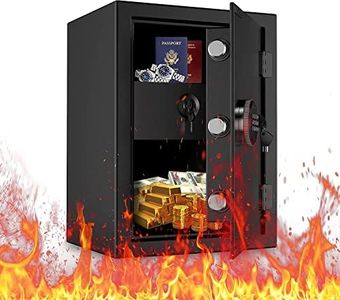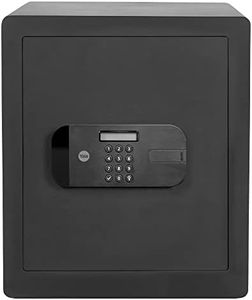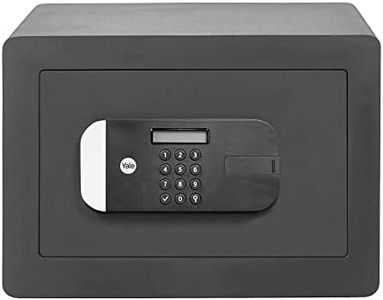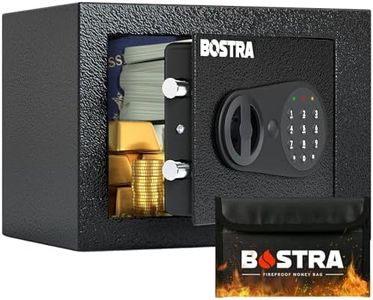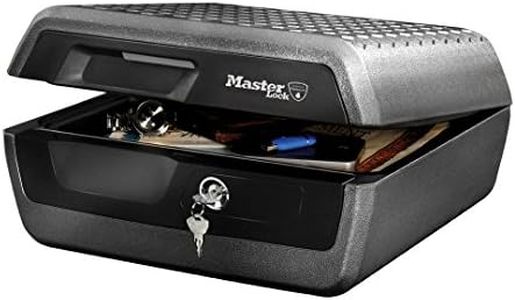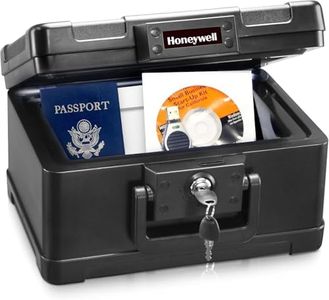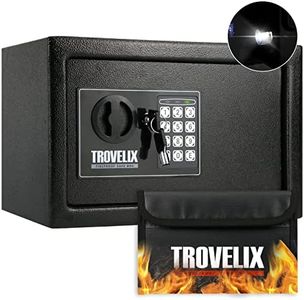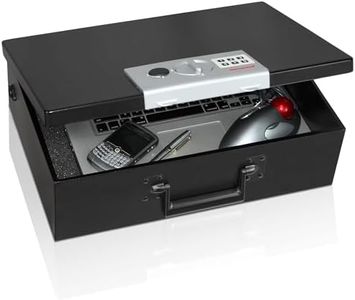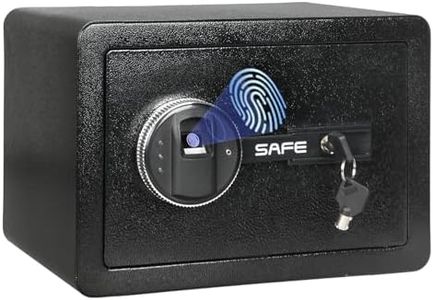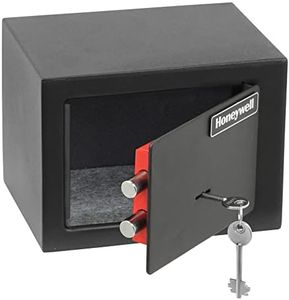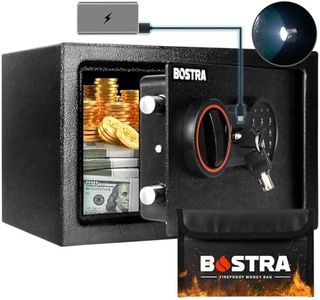We Use CookiesWe use cookies to enhance the security, performance,
functionality and for analytical and promotional activities. By continuing to browse this site you
are agreeing to our privacy policy
10 Best fireproof safe box
From leading brands and best sellers available on the web.By clicking on a link to a third party's website, log data is shared with that third party.
Buying Guide for the Best fireproof safe box
When choosing a fireproof safe box, it's important to consider what items you want to protect and from which hazards—primarily fire, but sometimes also theft and water. Fireproof safes come in different sizes, ratings, and with various features, so understanding your specific needs is key to making the best choice. Think about what you will store inside (documents, cash, electronic media, valuables), how often you'll need access, and where the safe will be placed in your home or office.Fire Rating/UL RatingThe fire rating tells you how long a safe can protect its contents against high temperatures during a fire. Ratings are usually given in time (30, 60, 90, or 120 minutes) and temperature (typically up to 1550°F/843°C or 1700°F/927°C). The higher and longer the rating, the better the protection. For storing basic documents and cash, a 30-minute fire rating might suffice, but for more valuable or heat-sensitive items, consider at least a 60-minute or higher rating. Your choice depends on how much peace of mind you want and the average fire department response times in your area.
Size and CapacityThe size and capacity of a fireproof safe box are measured in cubic feet or liters, and they dictate how much you can store inside. Small boxes are great for passports and jewelry, while larger safes can hold bigger documents, binders, or electronics. Think about what you plan to protect—not just today, but in the future as well. It's often a good idea to choose a safe that's a bit larger than your current needs, so you can add items over time.
Locking MechanismFireproof safes use different types of locking mechanisms, such as key locks, combination dials, electronic keypads, or biometric (fingerprint) scanners. Simpler locks (like key or dial) are more traditional and don’t require batteries. Electronic keypads offer quicker, easier access but need power, and biometric locks provide even faster access and extra security. Choose the mechanism that feels most convenient and secure for you; if quick access is crucial, look for keypads or biometrics, but if you value simplicity and reliability, stick to mechanical options.
Water ResistanceWater resistance in a fireproof safe refers to how well it can keep its contents dry during events like firefighting (when water hoses are used) or floods. Safes may have seals and special construction to prevent water from seeping in for a certain period. If you live in an area prone to floods or want extra protection against sprinklers and hoses, pick a safe with clear water resistance claims, usually measured in how long the contents stay dry (e.g., 24 or 72 hours in standing water). It’s especially important if you are storing paper documents or electronics.
Weight and PortabilityThe weight of the safe box affects its portability and security. Heavy safes are difficult to move and therefore offer better security against theft, while lighter boxes are easier to relocate and hide. Consider whether you need to move the safe frequently or if it will stay in a fixed place. If theft is a concern, heavier is typically better, or look for a model that can be bolted down.
Type of Protected ContentsCertain safes are rated specifically for different types of contents, such as paper documents, digital media (USB drives, hard drives), or film. Paper can handle higher internal temperatures (up to 350°F/177°C) before burning, but electronic media can be damaged at much lower temperatures (around 125°F/52°C). Make sure to choose a safe intended for the types of items you plan to store; for mixed items, look for safes with multi-purpose ratings or consider using data/media chests inside a standard fireproof safe.
